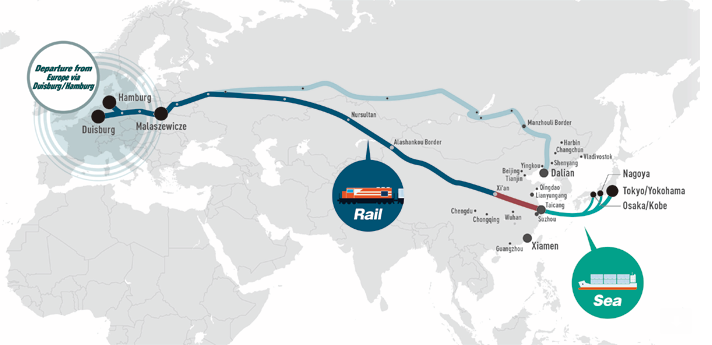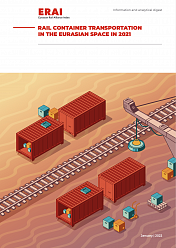The new service is already up and running. In Europe, it serves the German hubs of Hamburg and Duisburg and in Malaszewicze in Poland. In China, the train stops in the centrally located Xi’an, after which it continues to the port of Taicang, nearby Shanghai. Sea shipping is available twice a week to the Japanese ports of Tokyo, Yokohama, Nagoya, Osaka and Kobe.
Shorter and cheaper
It is not the first multimodal connection between Europe and Japan. This route has gained popularity over the years, with several operators exploring the multimodal possibilities along this stretch. As such, services are available from Dalian and Xiamen in China, but also from the Russian port of Vladivostok.
The lead time of the sea-rail route is substantially shorter than a complete ocean route, which is around forty days, Nippon Express points out. Compared to Dalian, the option via Taicang is shorter with one week, and interestingly, 40 per cent lower in transportation costs, according to the logistics provider.
Other ports
In May 2018, Nippon Express launched a multimodal service Europe-Japan via Dalian. In September 2019 this was complemented by a sea-rail route via Xiamen. Taicang is situated in the middle of these two Chinese ports on the east coast, and better positioned for sea transport to Japan. The distance to Japan is much shorter than from Dalian or Xiamen.
The route via Russia, rather than China has also proven to be a successful alternative. Here, the Russian port of Vladivostok is used for transshipment. From here, trains take cargo via the Trans-Siberian railway to the Małaszewicze/Brest border crossing between Poland and Belarus. The journey from Brest to Vladivostok takes 10 days while the entire journey lasts 22 days.
In December 2019, this route was extended to the German port of Hamburg. Apart from several Japanese ports, it also connects to the South Korean port of Busan.




